#geechee's
Explore tagged Tumblr posts
Text
youtube
the intersect of Trial and Triumph - the new museum
youtube
Craig Melvin discovers family history at International African American Museum
youtube
The International African American Museum: History is Alive
#The International African American Museum: History is Alive#charleston#south carolina#geechee's#gasdens wharf#The International African American Museum: History#The International African American Museum opens#Youtube
13 notes
·
View notes
Text

Honestly, this. This, this, this.
Especially with Agatha’s excuse of “it was the 1920s!” sounds so similar to how white people respond to reparations (“It was 400 years ago! Get over it.”)
#kathryn hahn#aaa#agatha all along#agatha harkness#jennifer kale#sasheer zamata#give this black woman her own story#and I wish we got to see more of an African centric magic with her#especially since she says she identifies with being a root worker#white feminism#black girls of tumblr#she needs her own show with an all black cast focusing exclusively on black magic practices#give us a witch from Louisiana#give us a Gullah Geechee witch#give us all the black witches that practice Afrocentric magic#1k notes
3K notes
·
View notes
Text

South Carolina Miku by pixelatedsweat on Xitter
#hatsune miku#regional miku#cultural miku#not my art#pixelatedsweat#i will take this down if op wants and/or reblog from them instead if they have tumblr i just love it and didn't see it on here already#this is the only south carolina miku I've seen that actually captures the local ''culture''#aside from this i think the only way you even could have an SC miku that has a real culture is to make gullah/geechee miku#which i would love to do but it's not really MY culture so pleeeeease can someone from the islands do that
144 notes
·
View notes
Text
I need y’all attention for just a few minutes, I know I haven’t been on here much but if y’all could please sign and share this petition to show support for the Gullah Geechee community!
Here is a screenshot of what is going on.



#black spiritualist#gullah geechee#black tarot readers#african american culture#black tumblr#raise awareness#protect the environment
1K notes
·
View notes
Text

A rice raft with Gullah Geechees near Georgetown, S.C., in 1904.
Photo: College of Charleston Stereoscopic Views, Special Collection, Addlestone Library.
104 notes
·
View notes
Text
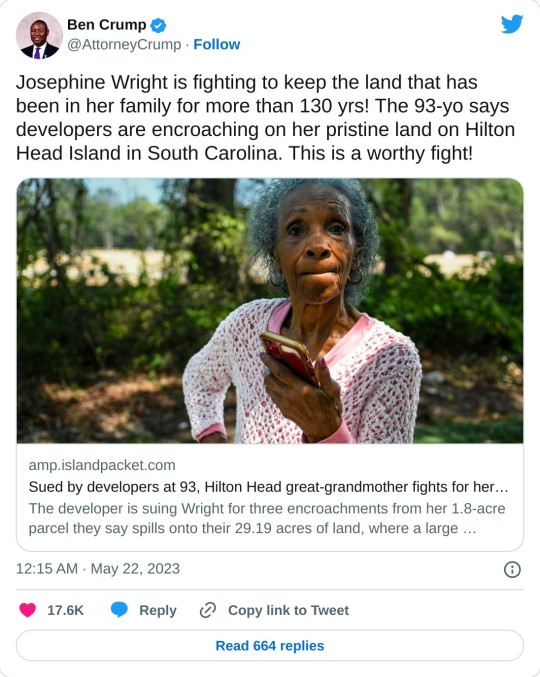
youtube
Nothing about this is right - nothing
#geechee land#south carolina#Hilton Head#Gullah People Land#93 year old Hilton Head woman facing lawsuit from developers#Josephine Wright#heritage land#family property#stolen legacy#white supremacy#white hate#Youtube
518 notes
·
View notes
Text


Daughters of Evelyn - now available on Apple Books, Kindle, and Barnes & Noble!
Immerse yourself in a tale that beautifully blends our rich Gullah-Geechee culture with supernatural fantasy, creating a unique and mesmerizing experience.
This short story serves as a prequel to our novel series, set in the enchanting city of Charleston, SC.
Check it out, share with friends, and leave a review—your feedback means the world to us.
Thank you. 🤍
Follow us on IG: thesgcollective_
#charleston#gullah geechee#horror#suspense#book quotes#short fiction#short story#south carolina#writerscommunity#fantasy
33 notes
·
View notes
Text
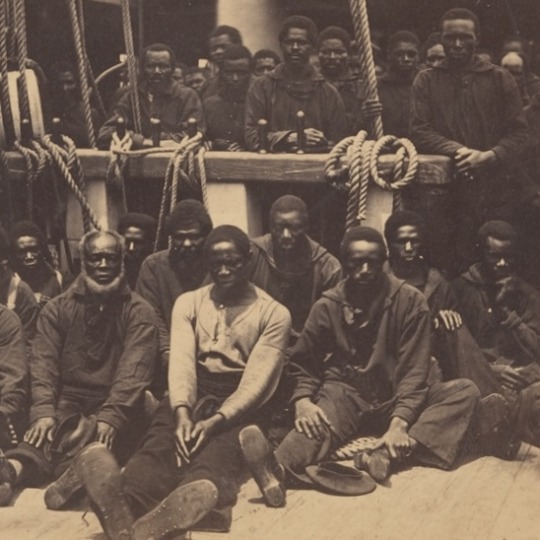
Historians from Southern Illinois University in the Africana Studies Department documented about 20 title words from the Kikongo language are in the Gullah language. These title words indicate continued African traditions in Hoodoo and conjure. The title words are spiritual in meaning. In Central Africa, spiritual priests and spiritual healers are called Nganga.
In the South Carolina Lowcountry among Gullah people a male conjurer is called Nganga. Some Kikongo words have a "N" or "M" in the beginning of the word. However, when Bantu-Kongo people were enslaved in South Carolina the letters N and M were dropped from some of the title names. For example, in Central Africa the word to refer to spiritual mothers is Mama Mbondo. In the South Carolina Lowcountry in African American communities the word for a spiritual mother is Mama Bondo. In addition during slavery, it was documented there was a Kikongo speaking slave community in Charleston, South Carolina
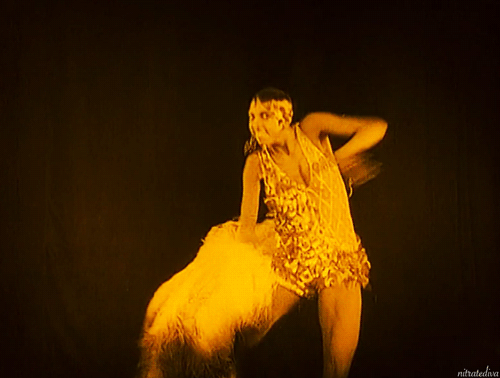
#nganga#mama mbondo#slave community#charlestonch#charleston south carolina#afrakan#kemetic dreams#africans#african#brownskin#brown skin#afrakans#african culture#afrakan spirituality#central africa#kikongo language#gullah#gullah geechee#gullah gullah island
93 notes
·
View notes
Text
African American Culture (Gullah)- Sweetgrass baskets
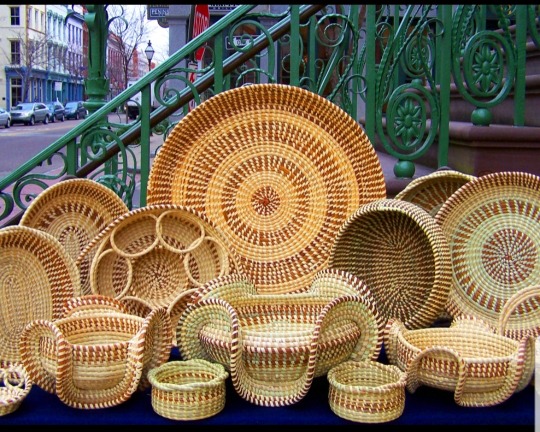

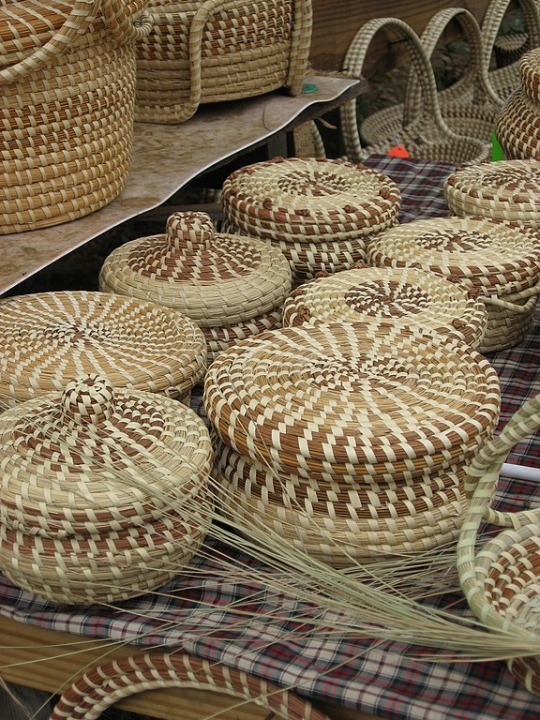

#aa culture#african american#black americans#culture#african american culture#tradition#sweetgrass baskets#gullah geechee#black american culture
96 notes
·
View notes
Text
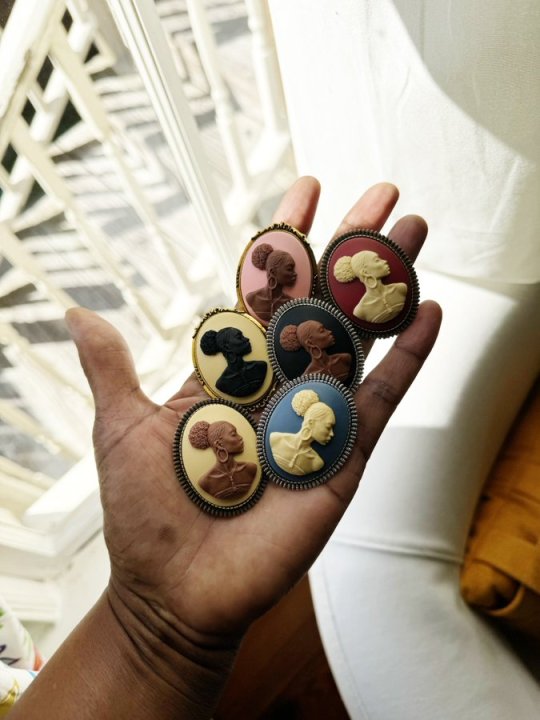
According to the creator of these bas-relief cameos, “Ooman” is woman in the English-based krio Gullah—or Geechee, and there are about 30 African languages included in Gullah.
“Ooman” is Jamaican Patois for woman. I love the similarity and am not surprised at the shared West African influence. Gullah-Geechee culture reminds me of Jamaican Maroons.
26 notes
·
View notes
Text





15 notes
·
View notes
Text

These Afro-American folklore stories are so beautiful. I especially like that within the horror ones, we’ve been running away from scary ish. We’ve been not dying from scary things. We know when to run. I also like there’s also a mermaid and fairy tale too. But these stories were so much fun to read.
@queen-shiba you’ll love this.
#soulaan#afro american#black American#Afro American folklore#black folklore#blackblr#afro American culture#soulaan culture#gullah geechee#black culture#black fairy#black mermaid#soulan
37 notes
·
View notes
Text
ID in Alt Text!
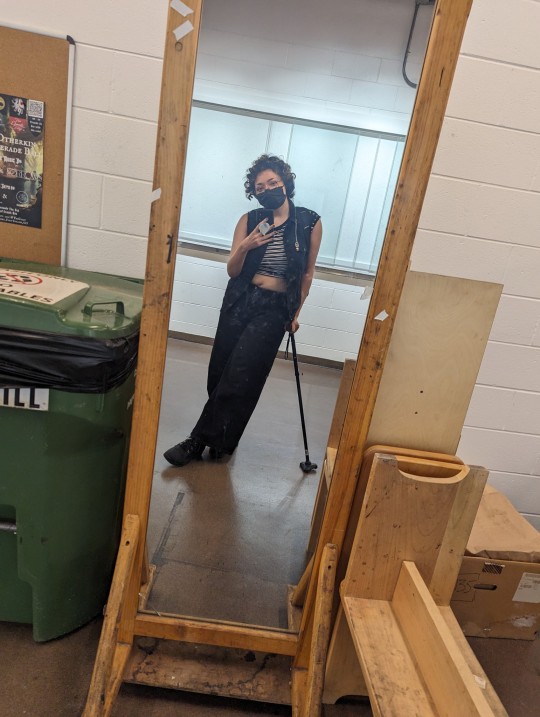

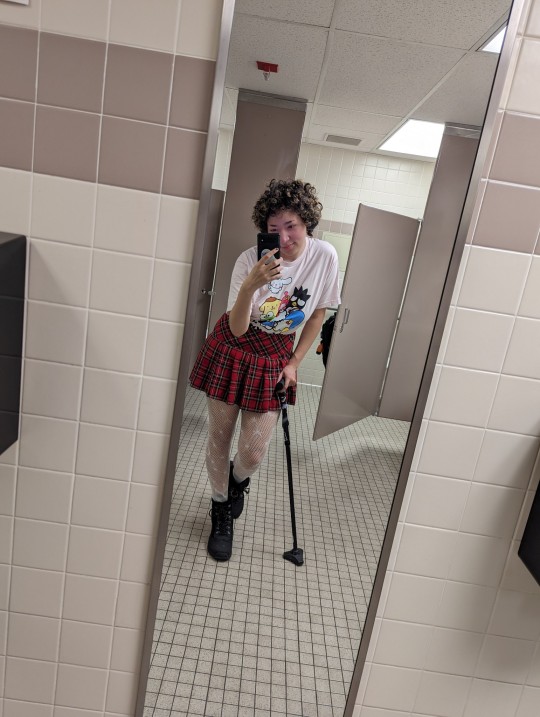
Hey, sorry I haven't been doing my daily outfit posts lately-- I guess I never mentioned why I started them, but it's this personal project that I'm working on where I take a picture (though, in all honesty, it's a lot of pictures lol) in whatever I'm wearing and I feature my cane to promote awareness and give representation to other cane users and members of the cpunk and Physically Disabled community. I'm working on building up the courage to take these pictures outside as well, because I do them on campus, but we deserve to see ourselves outside as well!
The reason I haven't been keeping up with it is because my partner and I have really been really struggling financially as well as with our mental health (and me with my physical health as well, obviously lol) we moved across the country to go to school and it is So Hard-- I had to drop three out of five of my classes because the course work was just too much in volume and I need a job really bad (which is going to be Hard to do since we don't even know why I'm in such chronic pain yet 🙃 it's hard not to feel defeated!)
Either way, I think going to start posting them with the tag #TheVainCanes and #MobilityAidVainity but I'm also going to host a poll for some options bc I want this to be a widespread community thing!
I'm choosing these names because I've seen from both ableds and disabled elitists this idea that we and our mobility aides need to look like they're fresh out the hospital for us to be Believed and deserving of respect, and anything beyond that voids our suffering and invalidates our experiences-- and I think that's reductive, harmful, and just plain wrong! Our mobility aides are an extension of ourselves and we deserve to dress them up however we want. We deserve representation, and the normalization of Joy and Having Personality While Disabled.
This will be intersectional as well (bc. I mean look at me. Also I don't need a reason!) , people from all identities are welcomed and encouraged to join! This is meant to be a celebration of Us, Disabled, BIPOC, LGBTQIA2S+, and All That Jazz! (If you use a mobility aid, you're in!) We're beautiful gorgeous handsome devils and I think we'd do good seeing how good we all look in a designated tag
Also my cash app and Venmo are @/cherubpunque 👀 if anyone has some spare change I could have that would be an amazing help towards feeding me, my partner, and our two cats!!



To kick things off, I am a 2S, Afroindigenous person (Gullah and Kanien'kehá:ka!) who experiences chronic pain and fatigue. I have PTSD and a few other brain things going on, less than perfect eyesight, and a great passion for Art, Music, Subculture, and Helping Others whenever and however I can! I'm majoring in art and am working towards becoming a published graphic novelist. Idk I just have a lot of love and support to give, and a big need for love and support for myself as well, and I'm hoping to offer us a good opportunity for us to connect in a space that's just for us! We're already living outside of society's expectations for health, so why should we let these folks decide the way we look while doing it? Express yourself! (I'll also be tagging myself in future as #mothie so you can find me in the tags! Anyways, I gotta go lay down. My back hurts.)
#cpunk#cripple punk#cane user#chronic pain#chronic illness#solarpunk#diy punk#c punk#chronic fatigue#afro indigenous#indigenous#alt subculture#gullah geechee#gullah#self expression#mobility aid#TheVainCanes#MobilityAidVanity#TheVainCanesProject#MobilityAidVanityProject#punk#punk fashion#**i always mask in public!! i just take it off for these photos while im completely alone**#but i do like to spice it up with a fabric mask over it for a little extra fashion#face mask#spoonie#black mutual aid#trans mutual aid#queer mutual aid#indigenous mutual aid
119 notes
·
View notes
Text
HOODOO HOT TAKES, UNPOPULAR OPINIONS, AND TRUTHS (as I know them) COMING IN HOT.
My intentions are not to come with the smoke ...however its Hoodoo heritage month and it's becoming convoluted.
My priority isn't to be agreed with, but to help educate some about this tradition due to the truth turning into mush. I can hear people's takes on this subject as well. My opinions in some aspects could possibly be swayed, but the facts can not.
Loading...
#hoodoo#gullah geechee#rootworker#hoodoo man#conjure man#conjure#black spirituality#rootwork#witchcraft#witchblr#warlock#wizard101#black americans#ados#foundational black american#soulaan#witchy#folk magic#folklore#black people#black history#black tumblr#black girl magic#black girl moodboard#black men
11 notes
·
View notes
Text

RING SHOUT, St. Simon's Island, Georgia, ca. 1940
The ring shout, rooted in the ritual dances of West Africa and forged by the Atlantic slave trade, is believed to be the oldest surviving African-American performance tradition of any kind. Centered in the Gullah-Geechee region of the coastal South, it differs from traditional Black Religious Music in repertory, style, and execution.
#St. Simon's Island#Georgia#Gullah-Geechee#South East Coast#Culture#Spiritual#Tradition#1940#History
31 notes
·
View notes
Text
Ga. islanders vow to keep fighting change favoring rich buyers

DARIEN, Ga. - Descendants of enslaved people living on a Georgia island vowed to keep fighting after county commissioners voted to double the maximum size of homes allowed in their tiny enclave.
Residents fear the move will accelerate the decline of one of the South’s few surviving Gullah-Geechee communities.
An aspect of the ordinance that residents take issue with is the fact that it erases a clause about protecting the island’s indigenous history.
During public meetings leading up to the vote, the zoning board proposed changes to the ordinance of lowering the newly allowed home size and removing talk of golf courses being added to the island.
Black residents of the Hogg Hummock community on Sapelo Island and their supporters packed a meeting of McIntosh County’s elected commissioners to oppose zoning changes that residents say favor wealthy buyers and will lead to tax increases that could pressure them to sell their land.
ISLAND’S HERITAGE
Gullah-Geechee communities like Hogg Hummock are scattered along the Southeast coast from North Carolina to Florida, where they have endured since their enslaved ancestors were freed by the Civil War. Scholars say these people long separated from the mainland retained much of their African heritage, from their unique dialect to skills and crafts such as cast-net fishing and weaving baskets.
Regardless, commissioners voted 3-2 to weaken zoning restrictions the county adopted nearly three decades ago with the stated intent to help Hogg Hummock’s 30 to 50 residents hold on to their land.
Yolanda Grovner, 54, of Atlanta said she has long planned to retire on land her father, an island native, owns in Hogg Hummock. She left the county courthouse Tuesday night wondering if that will ever happen.
“It’s going to be very, very difficult,” Grovner said. She added: “I think this is their way of pushing residents off the island.”
Hogg Hummock is one of just a few surviving communities in the South of people known as Gullah, or Geechee, in Georgia, whose ancestors worked island slave plantations.
MORE | Mom in Grovetown calls cops on U.S. energy secretary’s staff
Fights with the local government are nothing new to residents and landowners. Dozens successfully appealed staggering property tax hikes in 2012, and residents spent years fighting the county in federal court for basic services such as firefighting equipment and trash collection before county officials settled last year.
“We’re still fighting all the time,” said Maurice Bailey, a Hogg Hummock native whose mother, Cornelia Bailey, was a celebrated storyteller and one of Sapelo Island’s most prominent voices before her death in 2017. “They’re not going to stop. The people moving in don’t respect us as people. They love our food, they love our culture. But they don’t love us.”
Merden Hall, who asked not to be on camera, has lived on Sapelo his whole life. He says he’s worried about the sizes of homes now allowed on the island.
“I’m not comfortable with this. They approved the 3,000 square feet, that’s the only thing I disapprove of, because that’s going to raise property taxes,” he said.
Hogg Hummock’s population has been shrinking in recent decades, and some families have sold their land to outsiders who built vacation homes. New construction has caused tension over how large those homes can be.
Commissioners on Tuesday raised the maximum size of a home in Hogg Hummock to 3,000 square feet of total enclosed space. The previous limit was 1,400 square feet of heated and air-conditioned space.
Commissioner Davis Poole, who supported loosening the size restriction, said it would allow “a modest home enabling a whole family to stay under one roof.”
“The commissioners are not out to destroy the Gullah-Geechee culture or erase the history of Sapelo,” Poole said. “We’re not out to make more money for the county.”
Commission Chairman David Stevens, who said he’s been visiting Sapelo Island since the 1980s, blamed Hogg Hummock’s changing landscape on native owners who sold their land.
“I don’t need anybody to lecture me on the culture of Sapelo Island,” Stevens said, adding: “If you don’t want these outsiders, if you don’t want these new homes being built ... don’t sell your land.”
County officials have argued that size restrictions based on heated and cooled spaced proved impossible to enforce. County attorney Adam Poppell said more than a dozen homes in Hogg Hummock appeared to violate the limits, and in some cases homeowners refused to open their doors to inspectors.
Hogg Hummock landowner Richard Banks equated that to the county letting lawbreakers make the rules.
“If everybody wants to exceed the speed limit, should we increase the speed limits for all the speeders?” Banks said.
Hogg Hummock residents said they were blindsided when the county unveiled its proposed zoning changes on Aug. 16. Commissioners in July had approved sweeping zoning changes throughout McIntosh County, but had left Hogg Hummock alone.
Commissioner Roger Lotson, the only Black member of the county commission, voted against the changes and warned his colleagues that he fears they will end up back in court for rushing them.
Two attorneys from the Southern Poverty Law Center sat in the front row. Attorney Anjana Joshi said they had “due process and equal protection concerns” about the way the zoning ordinance was amended.
“In our view, this was not done correctly,” said Joshi, who added: “We’re just getting started.”
Located about 60 miles south of Savannah, Sapelo Island remains separated from the mainland and reachable only by boat. Since 1976, the state of Georgia has owned most of its 30 square miles of largely unspoiled wilderness. Hogg Hummock, also known as Hog Hammock, sits on less than a square mile.
Hogg Hummock earned a place in 1996 on the National Register of Historic Places, the official list of the United States’ treasured historic sites. But for protections to preserve the community, residents depend on the local government in McIntosh County, where 65% of the 11,100 residents are white.
#Ga. islanders vow to keep fighting change favoring rich buyers#Gullah Geechee#Gullah Land#sapelo#sapelo island#Freedmen Lands#Stolen Lands#nrohp#national register of historic places
64 notes
·
View notes